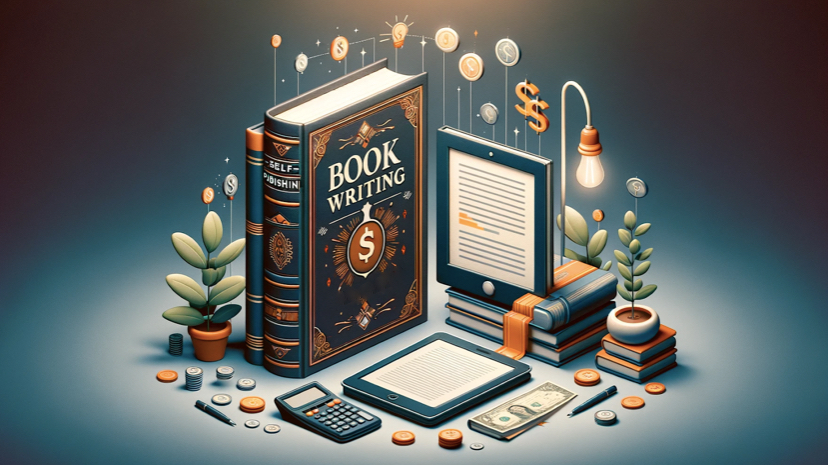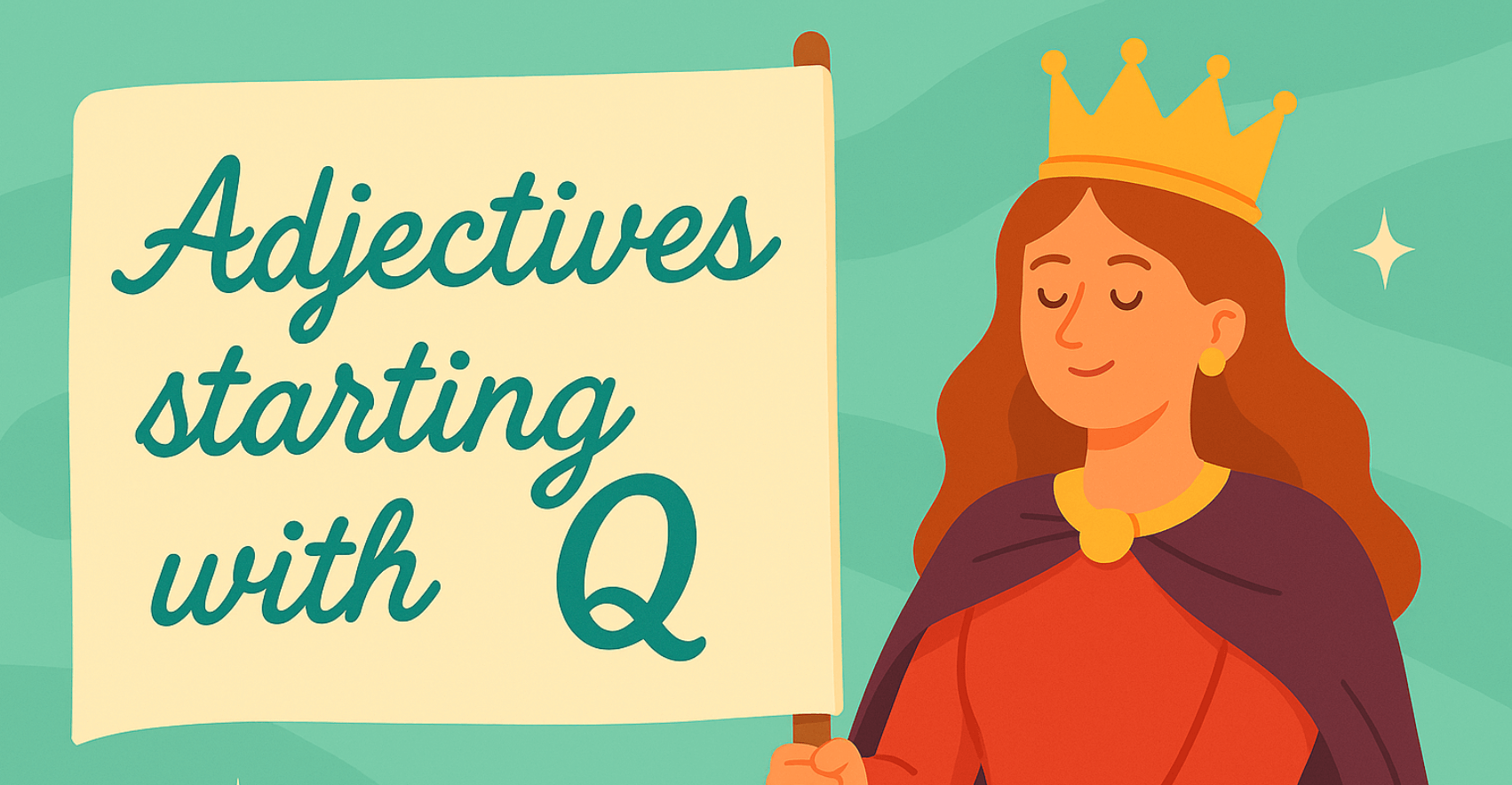
The book writing industry stands as a testament to the enduring power of storytelling and knowledge sharing, evolving with technological advancements and shifting market dynamics. At its core, this industry encompasses a wide array of genres, from gripping fiction narratives to insightful nonfiction author analyses, catering to a diverse readership with varying interests. Within this landscape, authors emerge as pivotal figures, weaving words into worlds, ideas into insights, and, ultimately, manuscripts into published works.
Bookwriting profitability, however, is a complex domain that transcends the mere act of publishing books. It encapsulates the financial success an author achieves through their literary endeavors, encompassing earnings from book sales, royalties, advances, and ancillary revenue streams. This profitability is not only a measure of an author’s commercial success but also a crucial factor that influences their ability to sustain a career in writing. It determines whether an author can afford to dedicate their time to writing books or must juggle it with other forms of employment.
At the heart of the publishing world lie two predominant routes: traditional publishing and self-publishing. Traditional publishing involves partnering with established publishing houses and often requires securing a literary agent, whereas self-publishing gives authors full control over the publishing process, from editing to marketing. Each path offers distinct advantages and challenges, shaping an aspiring author’s journey to profitability. This article aims to delve into the intricacies of these routes, offering insights into their impact on bookwriting profitability and guiding aspiring authors in making informed decisions that align with their creative goals and financial aspirations.
Your Publishing Journey Awaits – Start NowUnderstanding Book Writing Profitability
Book writing profitability can be succinctly defined as the financial gain an author receives from their writing efforts. This profitability is not solely about the number of books sold; it encompasses a spectrum of financial outcomes. An author’s salary depends on various revenue streams and cost considerations tied to the book’s production, distribution, and promotion. Understanding this concept is crucial for authors as it directly impacts their ability to sustain a writing career and invest in future projects.
Several key factors play pivotal roles in influencing an author’s profitability. Firstly, the publishing route chosen (traditional vs. self-publishing) significantly affects earnings, with traditional publishing offering advances and royalties, albeit often at lower rates due to the publishers’ involvement. In contrast, self-publishing can offer higher royalties per book sold but requires upfront investment in production and marketing. Genre and market demand also greatly influence profitability, as certain genres have more substantial and more dedicated readerships, potentially leading to higher book sales elsewhere.
Other critical factors include the self-published author’s ability to market their book effectively, the quality and appeal of the book cover and content, the pricing strategy, and the distribution channels used to reach readers. The cost of production, including editing, design, and formatting, also affects net profitability, especially for self-published authors who bear these costs directly.
Authors derive revenue from several streams, including:
- Royalties from print and digital sales: A percentage of the book’s sale price is returned to the author.
- Advances: Upfront payments given by traditional publishers, recouped through future royalties.
- Secondary rights sales: Income from selling rights for translations, audiobooks, film adaptations, etc.
- Direct sales: Profits from selling books directly to consumers, often at events or via an author’s website.
Maximizing profitability thus requires a strategic approach to these factors, balancing costs with potential revenue and leveraging the author’s strengths and market opportunities.
The Landscape of Traditional Publishing
The landscape of traditional publishing is marked by its structured, often rigorous journey from manuscript to bookstore, a path tread by countless authors dreaming of seeing their work in print. This conventional route involves several key players, including literary agents, editors, and publishing houses, each playing a crucial role in the book’s journey to publication and, ultimately, its profitability.
Traditional Publishing Process
The traditional publishing process typically begins with the completion of a manuscript, followed by the often daunting task of finding a literary agent. Agents act as the author’s advocate, using their industry connections to pitch the manuscript to suitable publishing houses. Once a publisher expresses interest, the manuscript undergoes rigorous rounds of editing, design, and marketing before finally making its way to bookshelves.
Role of Literary Agents and Publishing Houses
Literary agents are the gatekeepers of the traditional publishing world, offering expertise in publishing contracts and negotiation, market knowledge, and editorial insight. They ensure that the author’s work finds a home in a publishing house that aligns with their vision and audience. Traditional publishing houses, on the other hand, bring resources and expertise in editing, production, distribution, and marketing, significantly influencing a book’s chance of success.
Financial Aspects
Financially, traditional publishing is characterized by book advances and royalties. Advances are upfront payments made to the author against future royalties, providing financial support during the publication process. Royalties are then earned from book sales, calculated as a percentage of the sale price, typically ranging from 5% to 15% for print books sold, and up to 25% for digital formats. The allure of substantial advances and the prestige of being associated with renowned publishers draw many authors to this traditional publishing route.
Success Stories
A prime example of traditional publishing success is Stephen King, a prolific author whose career spans decades and genres. King’s writing journey also underscores the potential of traditional publishing to propel authors to stardom, offering a blend of editorial support, marketing prowess, and widespread distribution. His success story highlights how aligning with a traditional publisher can elevate an author’s work, making it a cultural touchstone and financial triumph.
Challenges and Benefits
Despite its allure, traditional publishing is not without challenges. The path to publication is highly competitive, with the acceptance rate of manuscripts by reputable agents professional editors, and publishers being quite low. Authors must also relinquish some creative control and adhere to the publishers’ timelines and marketing strategies.
However, the benefits can be significant. Traditional publishing offers a level of validation and prestige, access to professional editing and design services, and an established distribution network that can place books in prominent retail spaces. Moreover, the marketing and promotional support provided by publishers can be invaluable in reaching a wide audience, increasing the book’s visibility and potential sales.
In conclusion, the traditional publishing landscape offers a structured pathway to publication, with the support of experienced professionals in the industry. While it presents financial opportunities for successful authors through advances and royalties, it requires navigating a competitive environment and partnering with a publisher that aligns with the author’s vision and goals. For many, famous writers like Stephen King, this route has led successful authors to unparalleled success, cementing their place in literary history.

Insights into Self-Publishing
Self-publishing has emerged as a formidable force in the literary world, offering authors an unprecedented level of autonomy over their publishing journey. This democratized approach enables writers to bypass traditional gatekeepers, bringing their work directly to readers with the aid of digital platforms and print-on-demand technologies.
Your Publishing Journey Awaits – Start NowSelf-Publishing Process
The self-publishing process empowers authors to oversee every aspect of their book’s journey, from manuscript completion to publication and beyond. This includes editing, design, formatting, pricing, and distribution. Authors can utilize various platforms, such as Amazon’s Kindle Direct Publishing (KDP), to digitally self-publish all their books, while print-on-demand services enable physical book sales without the need for large inventory storage. This end-to-end control allows for rapid market entry and the flexibility to update content or pricing as needed.
Financial Aspects
Financially, self-publishing presents a different model from traditional publishing. Authors bear the initial costs of editing, cover design, formatting, and potentially marketing their own books, which can vary widely based on the quality of services employed. However, they retain much higher royalties per sale, often ranging from 40% to 70% of the retail price, providing a potentially higher return on investment, especially for books that achieve substantial sales volumes.
Pricing control is another significant advantage, enabling authors to adjust book prices to optimize sales and revenue. Promotional pricing strategies, such as temporary discounts or free book campaigns, can be effectively employed to increase visibility and readership.
Marketing and Author Websites
In self-publishing, the onus of marketing falls squarely on the author’s shoulders. Effective marketing strategies are crucial for visibility amidst the vast sea of digital content. Building a robust author website serves as the cornerstone of an author’s online presence, offering a platform for engaging with readers, sharing updates, and selling books directly. Social media, email marketing, and author networks play pivotal roles in promoting the book and building a loyal readership.
Success Stories
The self-publishing realm is rife with success stories that highlight the potential for significant financial and critical success. Authors like E.L. James, the bestselling author whose “Fifty Shades of Grey” series began as self-published fan fiction, have catapulted to global fame and substantial earnings, challenging the stigma once associated with self-publishing. These stories underscore the potential for self-published works to resonate with vast audiences, leading to traditional publishing deals, movie adaptations, and considerable financial success.
Profitability Comparison
Comparing the profitability of self-published authors to their traditionally published counterparts involves numerous variables, including sales volumes, royalty rates, and upfront costs. While traditionally published authors benefit from advances and professional support, they often receive lower royalty rates. Conversely, self-published authors, despite financial benefit from their higher per-sale earnings and direct control over pricing and marketing, must navigate the initial investment and the challenge of standing out in a crowded market.
In essence, self-publishing offers indie authors a viable path to profitability, especially for authors who excel in entrepreneurial skills, marketing, and direct engagement with readers. The blend of creative control, higher royalties, and direct reader interaction makes self-publishing an attractive option for many authors, offering the potential for both financial success and artistic fulfillment.

Revolutionizing Self-Publishing: Spines
In the evolving landscape of self-publishing, platforms like Spines, formerly known as BooxAI, are making significant strides in transforming how authors bring their work to the forefront. Spines, with its innovative use of AI, presents a compelling solution for authors aiming to optimize profitability and maintain autonomy over their publishing journey- a theme that resonates throughout this discussion on book publishing.
Spines has revolutionized the self-publishing landscape with its user-friendly dashboard, meticulously designed to democratize the publishing process. This intuitive interface ensures that authors, regardless of their technical prowess, can navigate the complexities of publishing with ease, effectively removing any technological barriers that might hinder their success. This seamless integration of accessibility and functionality caters to a broad spectrum of authors, from those taking their initial steps into the literary world to seasoned veterans with multiple titles under their belts.
By embracing inclusivity, Spines not only upholds the spirit of self-publishing but also expands the horizons for a diverse range of voices, ensuring that every author has the opportunity to share their story and be heard in the vast, dynamic expanse of the publishing universe. Among the services Spines offers are:
Swift Publishing Process
Spines sets itself apart with a remarkably fast turnaround, transitioning manuscripts to published books in under 30 days. This efficiency is transformative for authors accustomed to the prolonged timelines of the traditional publishing industry, offering a quicker route to getting their books into the hands of eager readers.
Cost-Effective Publishing Solutions
The affordability of Spines is a standout feature, providing budget-friendly comprehensive plans through AI-driven production efficiencies. This approach significantly lowers the financial barriers to publishing, a crucial factor for authors, especially those new to the scene, aiming to maximize profitability without compromising on quality.
Personalized Support
Spines enhances the self-publishing experience by offering dedicated personal production managers to each author. This personalized guidance is invaluable, particularly for those navigating the complexities of the publishing process for the first time, ensuring a smooth journey from manuscript to market.
Diverse Format Offerings
Acknowledging the varied preferences of readers, Spines supports all major publishing formats, including Print-on-Demand, eBooks, and Audiobooks, all generated with the help of AI. This versatility enables authors to reach a broader audience, thereby expanding their potential revenue streams.
Wide Distribution Network
With Spines, authors gain access to a global distribution network that spans over 100 channels, including major retailers like Amazon and Barnes & Noble. This extensive reach is pivotal for authors aspiring to connect with an international readership, further enhancing the book sells potential for profitability.
Your Publishing Journey Awaits – Start NowIn conclusion, Spines exemplifies the forward momentum of self-publishing by merging AI-driven efficiency with comprehensive author support. This platform significantly contributes to the enhancement of book writing profitability by reducing costs, broadening distribution, and simplifying the publishing process, positioning it as an ideal partner for authors navigating the dynamic realm of book publishing.
Comparing Traditional and Self-Publishing for Fiction Writers
For fiction writers, the choice between traditional and self-publishing is fraught with unique challenges and opportunities. Each route offers a distinct path to success, influenced by factors like genre, audience engagement, and the writer’s career goals.
Traditional Publishing for Fiction Writers
In the traditional publishing arena, fiction writers often face the daunting task of standing out in a highly competitive submission pool. Genres such as literary fiction, mystery, romance, and science fiction are well-represented, but breaking into these markets requires not only exceptional writing but also an understanding of market trends and publisher preferences. The benefit, however, is significant: traditional publishers provide extensive editorial support, helping to refine and polish manuscripts to meet market expectations. They also offer robust distribution networks, ensuring that books reach a wide array of bookstores and libraries, both domestically and internationally.
For series or genre fiction, traditional publishing can offer a structured framework for development and release, ensuring each book builds on the last’s momentum. However, this can also mean less creative control for the author, as publishers might request changes to align with market trends or series continuity.
Self-Publishing for Fiction Writers
Self-publishing, conversely, allows fiction writers to retain full creative control, enabling them to explore niche genres or unconventional narratives that might not align with traditional publishers’ expectations. This autonomy extends to publishing schedules, allowing authors to release books at their own pace, an essential factor for maintaining reader engagement, especially in series writing.
The challenge within fiction lies in the need for self-promotion and audience building. Fiction writers must become adept at marketing, often investing in social media, author websites, and reader engagement to build a following. While this can be daunting, the direct connection with readers offers invaluable feedback and fosters a loyal fan base.
Sales and Success Rates
When it comes to book sales and success rates, writing fiction the landscape is varied. Traditionally published fiction often benefits from the publisher’s marketing muscle, leading to higher visibility upon launch. This can translate to higher initial sales but comes with the caveat of lower royalties per book sold.
Self-published authors might face a slower start without the backing of a traditional marketing campaign, but the higher royalty rates in self-publishing mean that even modest sales can be financially rewarding. Success stories in self-publishing often come from authors who have built a series or a substantial body of work, allowing for cumulative sales and cross-promotion between multiple books.
In conclusion, fiction writers must weigh the benefits of creative control and higher royalties in self-publishing against the editorial support and distribution advantages of traditional publishing companies. The decision often hinges on the writer’s genre, goals, and willingness to engage in marketing and promotion, with each route offering a viable path to success in the ever-evolving landscape of fiction writing.

The Non-Fiction Writing Arena
The non-fiction writing arena presents a distinct set of considerations and challenges that differ significantly from the fiction sector. For non-fiction authors, the journey from concept to publication and beyond is often deeply intertwined with their expertise, audience engagement, and the tangible value their work offers to readers.
Distinct Considerations for Non-Fiction Authors
Non-fiction authors must first and foremost establish credibility and authority in their subject matter. Unlike fiction, where the narrative and professional writer’s creativity and engagement are paramount, non-fiction success hinges on the author’s ability to convey expertise and provide insightful, accurate information. This necessity places a premium on thorough research, clear articulation of complex ideas, and the presentation of unique perspectives that contribute meaningfully to existing dialogues within the field.
Niche Audience and Expertise
The significance of identifying and targeting a niche audience cannot be overstated in non-fiction writing. Non-fiction works often cater to specific interests, from self-help to historical analysis, requiring authors to have a deep understanding of their audience’s needs, questions, and broader conversations within the niche. Building a platform—be it through blogging, speaking engagements, social media, or other forms of content creation—is crucial for non-fiction authors. This platform not only establishes their authority but also helps cultivate a dedicated readership eager for their insights.
Author Platform
An author’s platform is their foundation in the non-fiction realm, originally self-published, serving both as a testament to their expertise and as a marketing tool for their work. A robust platform can significantly enhance a book’s market reception, providing a ready audience at launch and serving as a channel for ongoing engagement and promotion. For many non-fiction authors, the book itself becomes an extension of their broader professional endeavors, often leading to opportunities for consulting, speaking engagements, and further publications.
Your Publishing Journey Awaits – Start NowFinancial Dynamics and Market Reception
The financial landscape for non-fiction authors is markedly influenced by their platform and the perceived value of their content. While traditional publishing can offer advances and structured marketing support, self-publishing in non-fiction allows for greater flexibility in leveraging the book within the author’s broader business model. For instance, a book on leadership might serve as a key component of a professional consultant’s suite of services.
Non-fiction books often enjoy a longer shelf life than fiction, with continued relevance and sales driven by the ongoing applicability of their content. This extended market presence can translate into sustained revenue, especially if the book is used in academic settings, professional development courses, or as a reference in its field.
In conclusion, the non-fiction writing arena demands a blend of authoritative content, strategic audience engagement, and a robust author platform. The pathway to success involves not only the delivery of compelling, informative content but also the effective leverage of the author’s expertise and network, shaping the book’s financial viability and market reception.
Strategies for Maximizing Profitability
Maximizing profitability in book publishing, whether through traditional or self-publishing routes, requires a strategic approach that extends beyond the mere act of writing and publishing a book. Authors must consider a range of factors, from building a compelling brand to engaging in effective marketing, to ensure their work reaches the widest possible audience and generates sustainable revenue.
The Power of a Portfolio
One of the most effective strategies for maximizing profitability is the creation of multiple books. For traditionally published authors, a strong debut can pave the way for subsequent publications, with each new title reinforcing the author’s brand and drawing in more readers. Self-published authors, on the other hand, often find that having a series or a catalog of titles allows for cross-promotion, increased visibility, and more money, as readers who enjoy one book are likely to seek out others. In both cases, a portfolio of work can lead to a cumulative increase in sales and royalties, creating a more stable income over time.
Marketing and Branding
In today’s digital age, marketing, and successful author branding have become indispensable tools in an author’s arsenal for maximizing profitability. Building a recognizable and successful author brand helps in establishing a loyal reader base. Effective marketing strategies, such as social media engagement, email newsletters, and author websites, can significantly boost visibility and attract new readers. For traditionally published authors, collaborating with the publisher’s marketing team to align promotional efforts can amplify reach, while self-published authors might consider investing in advertising or hiring marketing professionals to enhance their book’s presence in a crowded market.
Enhancing the Reader Experience
Exclusive bonus material, such as additional chapters, behind-the-scenes content, or companion guides, can add value to the printed book, encouraging purchases and enhancing reader engagement with the entire process. This content can be particularly effective as a promotional tool, incentivizing pre-orders or rewarding loyal readers.
The importance of high-quality book cover art and professional editing services cannot be overstated. An eye-catching cover is crucial for making a strong first impression, while thorough editing ensures that the content is polished and professional, factors that significantly impact reader reviews and recommendations. For self-published authors, investing in these services upfront can lead to higher quality products that compete more effectively in the marketplace, thereby increasing profitability.
Maximizing profitability in book publishing involves a multifaceted approach that goes beyond writing. By developing a portfolio of works, investing in marketing and branding, and enhancing the reader experience through professional presentation and exclusive content, authors can significantly increase their chances of financial success in the competitive world of book publishing.

Charting Your Path: A Conclusion on Publishing Profitability
Navigating the intricate terrains of traditional and self-publishing reveals a landscape rich with opportunities and challenges unique to each route. Traditional publishing, with its structured approach, offers the allure of professional editing, marketing support, and established distribution networks, albeit at the cost of slower timelines and potentially smaller royalty percentages. On the flip side, self-publishing champions autonomy, granting authors control over every aspect of the publishing process, from cover design to pricing strategy, paired with the potential for higher royalties per sale.
For aspiring authors pondering their journey into the realm of published works, the choice between these paths is not merely a financial calculation but a deeply personal decision that hinges on one’s goals, preferences, and strengths. Whether drawn to the prestige and support of traditional publishing or the entrepreneurial spirit and flexibility of self-publishing, authors should tread the path that resonates most with their vision for their work and their aspirations for their writing career.
In the pursuit of a sustainable writing career and financial success, authors are encouraged to leverage the insights and strategies outlined, from the importance of building a compelling author brand to the strategic use of platforms like Spines that simplify the publishing process. By making informed decisions that align with their unique strengths and the evolving dynamics of the publishing industry, authors can not only navigate the complexities of book writing profitability but also carve out a fulfilling and successful career in the literary world.
Your Publishing Journey Awaits – Start Now





